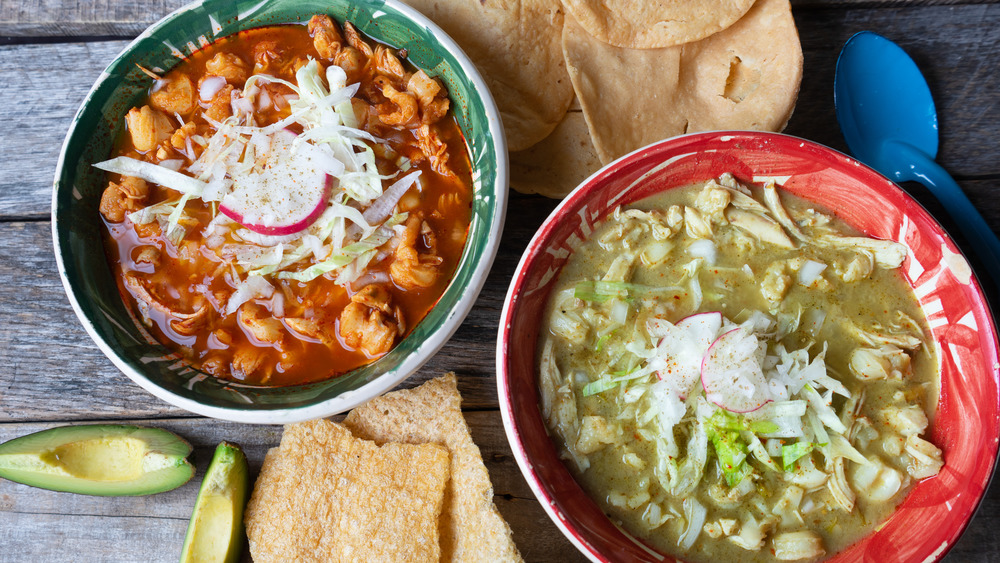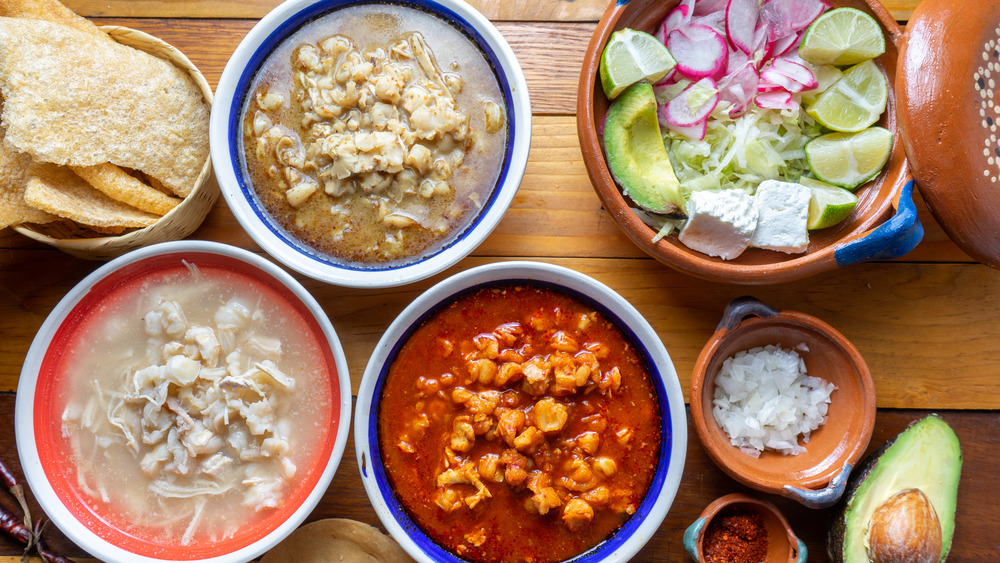What's The Difference Between Pozole Rojo And Pozole Verde?
If you took Spanish 101, dine at Mexican restaurants, or spent a spring break in Cancún, then you probably already know that in Spanish, "rojo" means red, and "verde" means green. So, if you are thinking the difference between these two soups has something to do with the color, then you are on to something! Pozole (also posole) comes in a variety of gorgeous shades, and pozole rojo and pozole verde are two of the most common.
According to Culture Trip, Pozole is a tasty traditional Mexican stew served for celebrations and big gatherings. It is traditionally made with pork, garlic, and hominy — which are basically corn kernels that have been soaked in a solution to soften them, making them bloated and chewy (via Kitchn). If you're attempting pozole at home, you can find canned hominy at the grocery store. Pozole variations call for everything from chicken to avocado and everything in between.
There's pozole rojo, pozole verde, and even pozole blanco
Pozole has come a long way from its sordid past allegedly involving cannibalism. Fortunately, you don't have to worry about pozole rojo including the blood of any slain warriors. Instead, this version of pozole gets its red hue from chilies like guajillo, ancho, or piquin (via Culture Trip).
Pozole verde, on the other hand, can include a variety of ingredients to create its green shade, like tomatillos (according to Bon Appétit, tomatillos are a Mexican fruit similar to tomatoes, with less sweetness and more acidity), cilantro, and jalapeños. There's even a pozole blanco that doesn't include any colorful salsas.
If all of this pozole talk is making you hungry, then a trip to your favorite Mexican restaurant might just be in order. However, if you're really feeling adventurous, it might be time to take your Mexican cooking to the next level. Culinary writer Anya von Bremzen's Mexican Chicken Pozole Verde comes highly reviewed. Food & Wine recommends pairing the dish with "a rich but unoaked white wine," but a Mexican lager and cheap tequila might taste a little more like those cherished Cancún memories.

